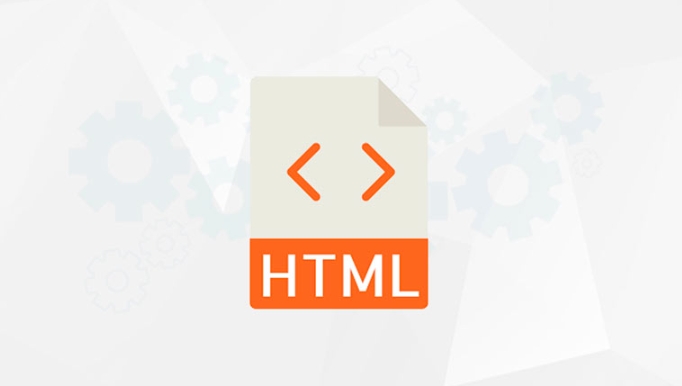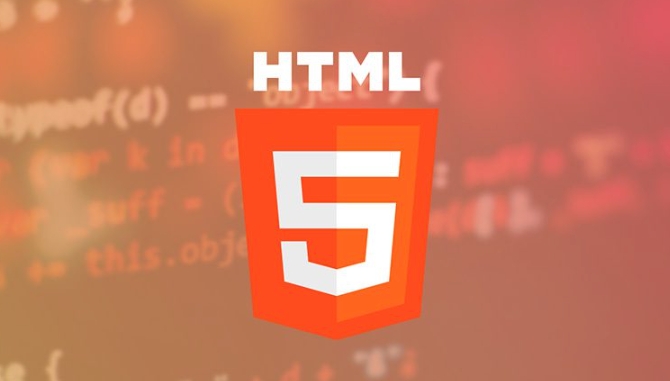The iframe tag is used to embed other documents in the current web page. It is often used to display content such as videos, maps or advertisements, but it poses security risks. The main risks include click hijacking, cross-site scripting attacks and data breaches. To improve security, the sandbox attribute limit function should be used, the allow attribute should be set carefully, the untrusted sources should be avoided, and the Content Security Policy (CSP) should be configured. Avoid using iframes when it comes to performance, accessibility, or when it comes to sensitive operations.

The HTML <iframe></iframe> tag is used to embed another document within the current webpage. It's commonly seen for things like embedding videos, maps, or ads from external sources. While useful, it also comes with some security risks that are important to understand.
 tag and its security risks?" />
tag and its security risks?" /> What Does the <iframe></iframe> Tag Do?
The <iframe></iframe> (inline frame) tag allows you to load a separate HTML document inside a window or section of your current page. For example, many websites use iframes to display YouTube videos or embedded Google Maps without linking away from their site.
 tag and its security risks?" />
tag and its security risks?" /> You can control the size, source URL, and even allow certain features like fullscreen playback using attributes like src , width , height , and allowfullscreen .
A basic example looks like this:
 tag and its security risks?" />
tag and its security risks?" /><iframe src="https://example.com" width="600" style="max-width:90%"></iframe>
This will show content from example.com directly on your page.
Why Can Iframes Be a Security Risk?
Iframes aren't inherently dangerous, but because they load external content into your page, they can open the door to a few types of attacks:
- Clickjacking : Attackers can hide malicious iframes over legitimate buttons or links, tricking users into clicking something they didn't intend to.
- Cross-Site Scripting (XSS) : If the iframe source isn't trusted or properly sanitized, attackers might inject harmonious scripts.
- Data leakage : If an iframe loads content from a different domain, it may have access to cookies or other sensitive data if not configured securely.
It's especially risk when a site allows user-generated content to include iframes — for example, in comments or forum posts — without filtering where they point to.
How to Use Iframes More Securely
There are a few best practices you can follow to reduce the risks:
Use the
sandboxattribute – This limits what the iframe can do, like preventing it from submitting forms or running scripts.Example:
<iframe src="https://example.com" sandbox></iframe>
Set
allowattributes carefully – You can allow specific capabilities like fullscreen while keeping others restricted.Avoid loading untrusted sources – Only embedded content from domains you trust. Don't let users input arbitrary URLs unless you validate them.
Use Content Security Policy (CSP) – On the server side, set CSP headers to restrict which domains are allowed to be embedded via iframe.
- If performance matters a lot — iframes can slow down page load times.
- If accessibility is a priority — screen readers sometimes struggle with iframes.
- If you're dealing with highly sensitive actions — like payments or account settings — avoid embedding those in iframes.
These steps won't eliminate all risk, but they make exploitation much harder.
When Should You Avoid Using Iframes?
While iframes are handy, there are situations where it's better to avoid them altogether:
In these cases, consider alternatives like API integrations or server-side rendering.
Basically that's it.
The above is the detailed content of What is the HTML tag and its security risks?. For more information, please follow other related articles on the PHP Chinese website!

Hot AI Tools

Undress AI Tool
Undress images for free

Undresser.AI Undress
AI-powered app for creating realistic nude photos

AI Clothes Remover
Online AI tool for removing clothes from photos.

Clothoff.io
AI clothes remover

Video Face Swap
Swap faces in any video effortlessly with our completely free AI face swap tool!

Hot Article

Hot Tools

Notepad++7.3.1
Easy-to-use and free code editor

SublimeText3 Chinese version
Chinese version, very easy to use

Zend Studio 13.0.1
Powerful PHP integrated development environment

Dreamweaver CS6
Visual web development tools

SublimeText3 Mac version
God-level code editing software (SublimeText3)

Hot Topics
 Explain the purpose of the role attribute in ARIA.
Jun 14, 2025 am 12:35 AM
Explain the purpose of the role attribute in ARIA.
Jun 14, 2025 am 12:35 AM
ARIA's role attribute is used to define the role of web elements and improve accessibility. 1. Role attribute helps assistive technology to understand the functions of elements, such as buttons, navigation, etc. 2. Use role attributes to assign specific roles to non-semantic HTML elements. 3. The role attribute should be consistent with the element behavior and be verified by the accessibility tool test.
 HTML and Design: Creating the Visual Layout of Websites
Jun 14, 2025 am 12:39 AM
HTML and Design: Creating the Visual Layout of Websites
Jun 14, 2025 am 12:39 AM
How to create a website layout? 1. Use HTML tags to define the content structure, such as, ,. 2. Control styles and positions through CSS, using box model, float or Flexbox layout. 3. Optimize performance, reduce HTTP requests, use cache and optimize images, and ensure responsive design.
 How can you ensure your HTML code is readable and maintainable?
Jun 10, 2025 am 12:06 AM
How can you ensure your HTML code is readable and maintainable?
Jun 10, 2025 am 12:06 AM
Improve the readability and maintainability of HTML code can be achieved through the following steps: 1. Use semantic tags, such as, etc. to make the code structure clear and improve SEO effect; 2. Keep the code formatted and use consistent indentation and spaces; 3. Add appropriate comments to explain the code intention; 4. Avoid excessive nesting and simplify the structure; 5. Use external style sheets and scripts to keep the HTML concise.
 How do I stay up-to-date with the latest HTML standards and best practices?
Jun 20, 2025 am 08:33 AM
How do I stay up-to-date with the latest HTML standards and best practices?
Jun 20, 2025 am 08:33 AM
The key to keep up with HTML standards and best practices is to do it intentionally rather than follow it blindly. First, follow the summary or update logs of official sources such as WHATWG and W3C, understand new tags (such as) and attributes, and use them as references to solve difficult problems; second, subscribe to trusted web development newsletters and blogs, spend 10-15 minutes a week to browse updates, focus on actual use cases rather than just collecting articles; second, use developer tools and linters such as HTMLHint to optimize the code structure through instant feedback; finally, interact with the developer community, share experiences and learn other people's practical skills, so as to continuously improve HTML skills.
 How do I use the element to represent the main content of a document?
Jun 19, 2025 pm 11:09 PM
How do I use the element to represent the main content of a document?
Jun 19, 2025 pm 11:09 PM
The reason for using tags is to improve the semantic structure and accessibility of web pages, make it easier for screen readers and search engines to understand page content, and allow users to quickly jump to core content. Here are the key points: 1. Each page should contain only one element; 2. It should not include content that is repeated across pages (such as sidebars or footers); 3. It can be used in conjunction with ARIA properties to enhance accessibility. Usually located after and before, it is used to wrap unique page content, such as articles, forms or product details, and should be avoided in, or in; to improve accessibility, aria-labeledby or aria-label can be used to clearly identify parts.
 How do I create a basic HTML document?
Jun 19, 2025 pm 11:01 PM
How do I create a basic HTML document?
Jun 19, 2025 pm 11:01 PM
To create a basic HTML document, you first need to understand its basic structure and write code in a standard format. 1. Use the declaration document type at the beginning; 2. Use the tag to wrap the entire content; 3. Include and two main parts in it, which are used to store metadata such as titles, style sheet links, etc., and include user-visible content such as titles, paragraphs, pictures and links; 4. Save the file in .html format and open the viewing effect in the browser; 5. Then you can gradually add more elements to enrich the page content. Follow these steps to quickly build a basic web page.
 What is an HTML tag?
Jun 13, 2025 am 12:36 AM
What is an HTML tag?
Jun 13, 2025 am 12:36 AM
HTMLtagsareessentialforstructuringwebpages.Theydefinecontentandlayoutusinganglebrackets,ofteninpairslikeand,withsomebeingself-closinglike.HTMLtagsarecrucialforcreatingstructured,accessible,andSEO-friendlywebpages.
 How do I create checkboxes in HTML using the element?
Jun 19, 2025 pm 11:41 PM
How do I create checkboxes in HTML using the element?
Jun 19, 2025 pm 11:41 PM
To create an HTML checkbox, use the type attribute to set the element of the checkbox. 1. The basic structure includes id, name and label tags to ensure that clicking text can switch options; 2. Multiple related check boxes should use the same name but different values, and wrap them with fieldset to improve accessibility; 3. Hide native controls when customizing styles and use CSS to design alternative elements while maintaining the complete functions; 4. Ensure availability, pair labels, support keyboard navigation, and avoid relying on only visual prompts. The above steps can help developers correctly implement checkbox components that have both functional and aesthetics.






